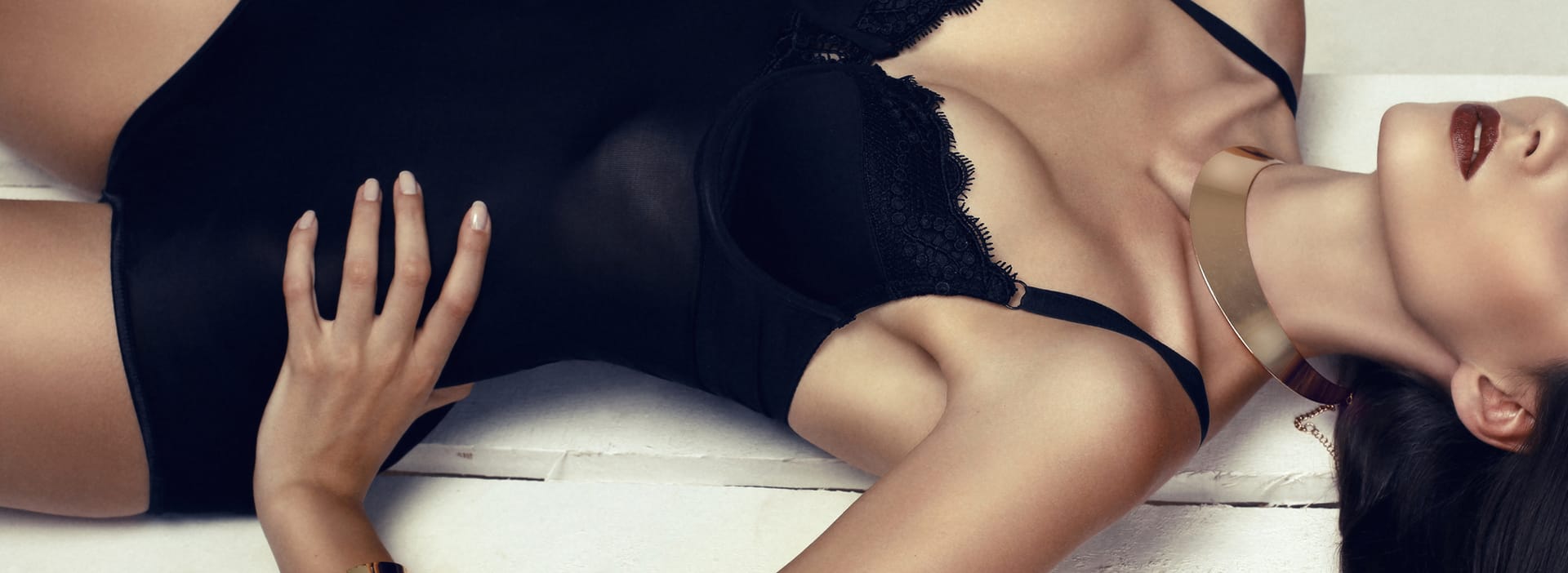Transumbilical Breast Augmentation
Dr. Hamawy is one of the few board certified plastic surgeons in United States who offer breast implants placed through the belly button as an option. Transumbilical Breast Augmentation (TUBA) is the term used when breast implants are placed through an incision in the belly button leaving no visible scars on the breasts or under the arms. Another advantage is that many women report minimal pain and a faster recovery than some other methods.
The TUBA is criticized by some surgeons for being unpredictable and unsafe. Unfortunately, most of the surgeons who are making these claims have not been trained in this technique and often have never even seen it performed. The facts are that the risks of having a TUBA are exactly the same as other methods when it is performed by a qualified, board certified plastic surgeon familiar with this technique.
Transumbilical breast augmentation was developed in 1991 by a plastic surgeon in Houston. Since then, this procedure has been safely performed for thousands of women who want to have breast implants but don’t want to have scars on their breasts.
More about Dr. Adam Hamawy
Dr. Adam Hamawy is a double board certified plastic surgeon who provides a number of advanced breast procedures, including an NJ breast augmentation, breast implant exchanges, breast revisions, breast lifts and breast reductions. Dr. Hamawy has years of experience providing high-quality care and natural-looking results.
When the TUBA was first performed over twenty years ago, the breast implants were being placed only over the pectoral muscle. As the technique was refined, new surgical instruments were designed so that the implants can be easily placed below muscle. Sub-pectoral implant placement is preferred for many women who have little breast tissue to adequately cover the edges of the implants. By placing the implant below the muscle, one can reduce the chances of long term complications that result from damage and thinning of the skin and breast tissue. For many women this placement will give them a more natural, sloping appearance, rather than having an abrupt fullness at the upper part of the breast. This can also help hide any rippling that may occur in some patients. Today, most transublimical implants are being placed behind the muscle.
Advantages of Transumbilical Breast Augmentation
Each technique of placing breast implants has it's advantages. The most obvious advantage of going through the belly button is the lack of a visible scar on the breasts or under the arms. In addition, some of the other benefits of TUBA are:
- A short recovery time, even when placing the implants below the muscle (sub-pectoral).
- The milk ducts are not cut during the procedure which reduces the risk of bacterial infection compared to incisions around the nipple. This also increases the possibility of being able to breastfeed if you choose to do so. However, it's important to keep in mind that implants, in general, may reduce milk production due to the pressure of the implant on the breast tissue.
- The chances of losing nipple sensation due to the cutting of nerves are almost zero.
- There is no stress on the tissues at the incision located in your belly button. When the incision is placed on or under the breast, it can stretch, thin and widen.
- There is minimal incision care required after surgery and scar treatments are usually not necessary.
- Normally, scars should not receive any sun exposure for up to a year while they mature. During that time they are sensitive and may become darker. This means if you have breast implants placed though other incisions, no topless sunbathing or indoor tanning until the scar is well-healed.
Common Myths
TUBA is dangerous and risks puncturing organs and causing massive bleeding.
False. The muscles of the abdomen are never cut or separated. The instruments do NOT go behind ribs or abdominal muscles. After the initial incision in the navel, sharp instruments are not used and dissection is performed bluntly.
You can only get implants placed above the muscle with TUBA.
False. In fact, it is easier to place implants under the muscle using this technique. However depending on the individual patient, there are some situations in which Dr. Hamawy may prefer to go over the muscle to achieve the best result.
The warranties for the breast implants are voided if place through the belly button.
False. A saline implant is rolled up and placed in a similar fashion as when placing it through incisions under the arm (trans-axillary), though the nipple (peri-areolar) or below the breast (inframammary). The implant is never placed through tubes or damaged in any way during the process. The warranty is not voided. However, only saline implants can be placed through the belly button. Saline implants can be rolled up into a small cylindrical profile. They are then filled up once they are in position behind the breast tissue. This cannot be done with silicone gel implants and trying to do so can cause damage to the implant. If this was attempted the warranty for the silicone implant would be void. But since silicone gels aren’t used in this technique, it is not an issue.
There is a high chance of breast asymmetry because of uneven placement of implants using TUBA.
False. First of all, it is impossible to achieve perfect symmetry with any technique since breasts are almost never the exactly the same before or after surgery. However, the chance of having significant differences between both sides is no higher than that of placing implants using any other method when placed by an experienced surgeon. During surgery, Dr. Hamawy raises his patients into a sitting position and views the placement of the implants in the breasts while upright. Adjustments are carried out immediately, before leaving the operating room.
TUBA causes visible “tracks” from your navel to your breasts that never go away.
False. There will normally be some swelling where the tunnel was created to pass the implants though. However, it is usually temporary and resolves as the tissue heals. It is extremely rare for this to remain after the swelling goes down.
Any implant adjustments after a TUBA have to be done through an incision on the breast.
False. An experienced TUBA surgeon can successfully perform straight forward implant exchanges or even minor capsule adjustments though the belly button without any new scars on the breasts. However, the surgeon usually will reserve the right to use another incision as a back-up if a trans-umbilical revision is unsuccessful.
Implants have a higher chance of “bottoming out “(dropping below the breast crease) because of the dissection though the lower breast fold when performing a TUBA.
False. The implants are placed though narrow tunnel while deflated so that the infra-mammary fold is hardly disrupted. Bottoming out is more due to a function of implant size selection and the stress that is caused on the tissues by implants that may be too large for a patient. It is no more or less likely to occur than with any other method.
Quick Facts
- Length: 1 hour
- Anesthesia: General or Sedation
- In/Outpatient: Outpatient
- Side Effects: Swelling, and some bruising or pain.
- Recovery: Return to work: 2-3 days. Light exercise: 1 week. Swelling completely resolves: 4-8 weeks.

Schedule a Consultation
Contact Us2025 © Copyright Princeton Plastic Surgeons. All Rights Reserved. Privacy Policy
Princeton Plastic Surgeons, based in the New Jersey area, boasts board-certified surgeons who specialize in procedures such as facelifts, breast lifts, breast augmentations, and tummy tucks.



